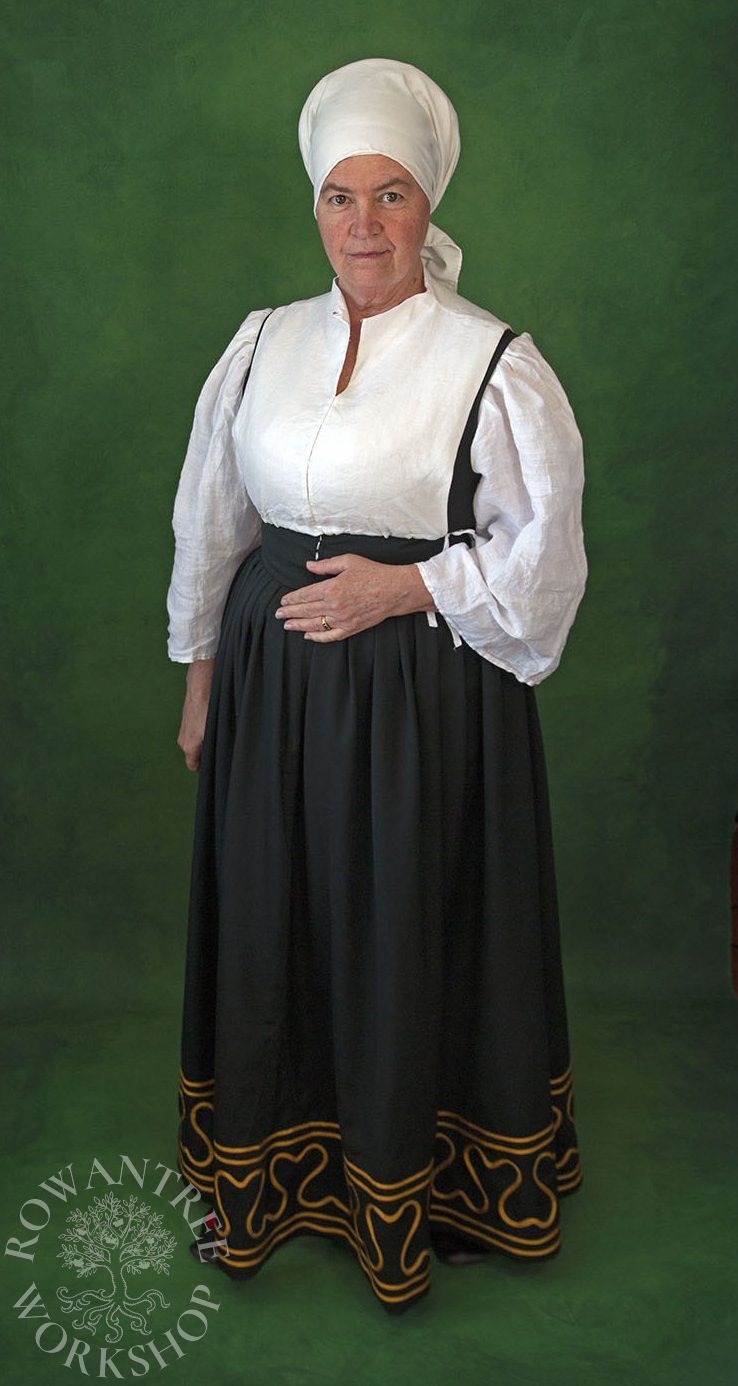A simple linen Goller (partlet) for an early 16th century middle class German woman.
The Goller covers the chest and shoulders and is used to provide modesty, warmth and/or as a fashion statement. The various forms of Goller were an essential part of a woman’s wardrobe in early 16th century Germany.
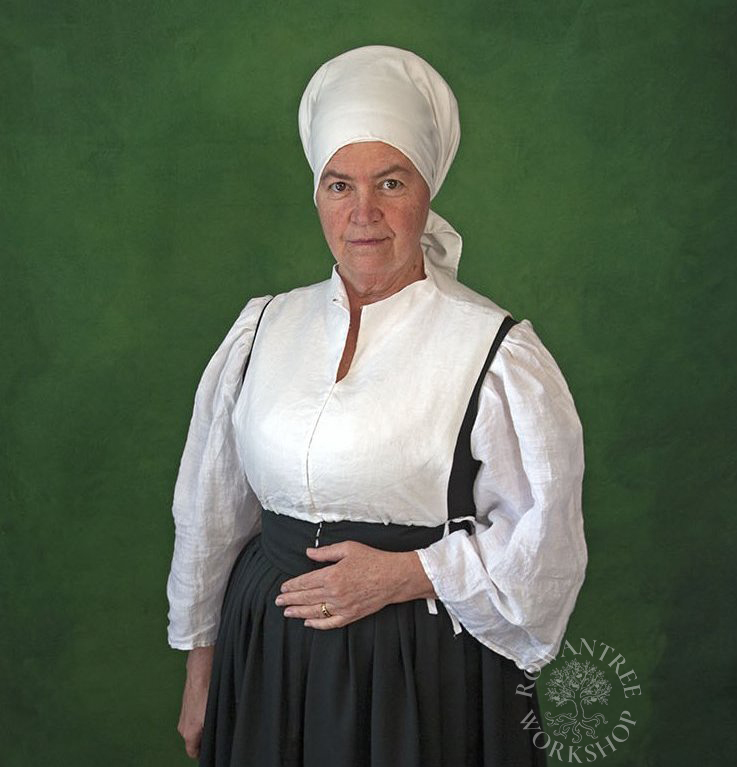
I had made some simple linen Gollers based on Bauer (farmer) images, but I really needed a middle class version to wear with my upgraded middle class wardrobe – and especially my pink wool Rock.
Research & Design
Textiler Haurat (Zander-Seidel 1990) notes that whilst historical terms for different types of Goller do exist, there is no clear identification as to which name goes with which type!
There are many images of middle class women wearing a plain linen Goller to cover their chest and shoulders, such as these paintings by Gertner and Pattner. These are worn beneath the Rock or perhaps even beneath the Unterrock, as seen in the painting by Barthel Beeham,

Source: AMF Fine Arts

Source: GMN
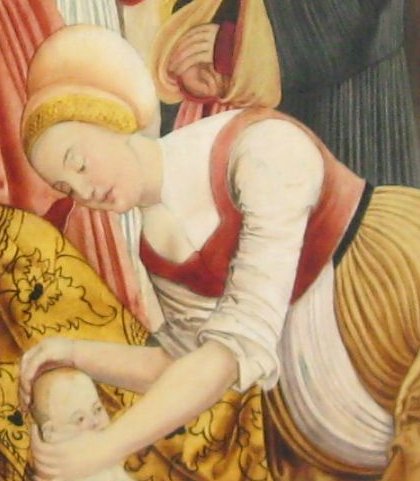
Source: GNM
These plain linen Gollers have either a small gestalt collar or none at all, and fasten up the front. The portrait by Gertner shows two small shadows – possible two sets of hooks and eyes, while the Plattner painting shows a single hook and eye, left open.
There is no hem visible on the images I have seen – not even a fine one, so it is possible that they were fully lined with more white linen. This would help with the opaque appearance which is a feature of this style.
Construction
Since this Goller might be worn over or under my Unterrock, I took the initial measurements while wearing it, then drafted a simple pattern. I used a single back panel and two front panels – wider and longer to provide extra coverage over the bust. I made a mock-up in scrap fabric, with a pocket hem for a drawstring and tried it on.
It worked well enough over the Unterrock, but not under it. The gathered fronts were too bulky, the shoulders too wide, and the back did not fit well at the neck. Needs another go…
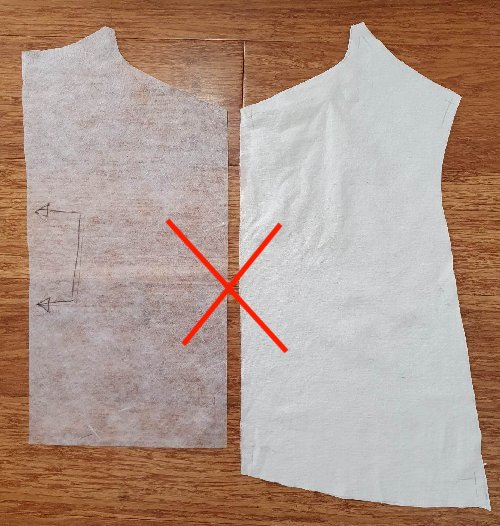
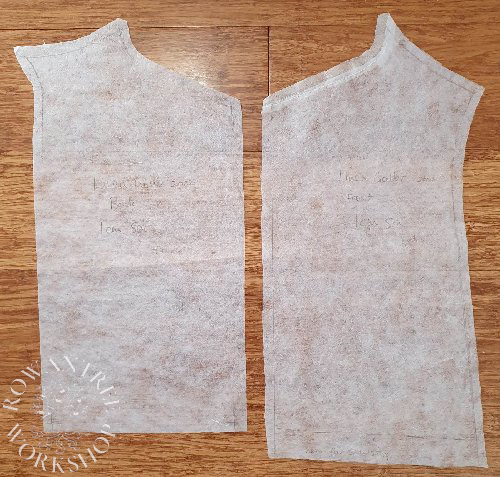
Version 2 – a simpler shape – worked much better. But the front tie was still bulky, the back hem did not lie smooth, and the front had a tendency to gape open. So I attached the tapes to the sides of the back (no drawstring), tied at the side, and stitched up the front seam, leaving enough room to get it on. Success!
Now I had a working model, the construction was easy. I cut out a pair of fronts and backs, and sewed up the back and shoulder seams to make two separate layers. I bag lined, sewing them together all around the edge, leaving the front hems open, then clipped and turned.
I made a pocket hem in the base of each front for the drawstring, then whip-stitched the two fronts together on the inside. I sewed a short tape to one side of the back and a long one to the other, threading it through the front pocket hems. Finally, I sewed two sets of small hooks and eyes at the collar.
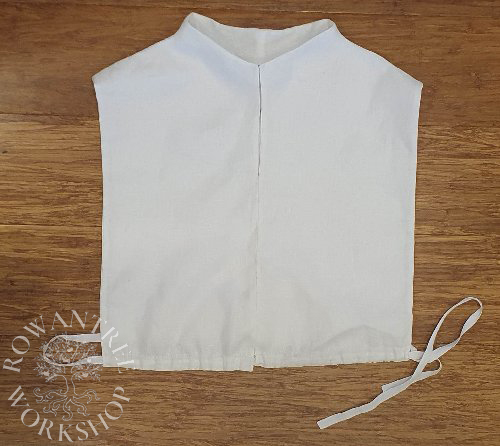
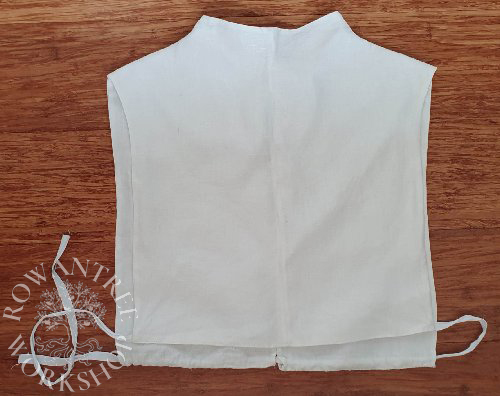
This Gollar can be worn in two ways.
In the Barthel Beeham painting above, it is clearly worn over the Hemd, under the Unterrock. Worn this way, it provides some additional bust support.
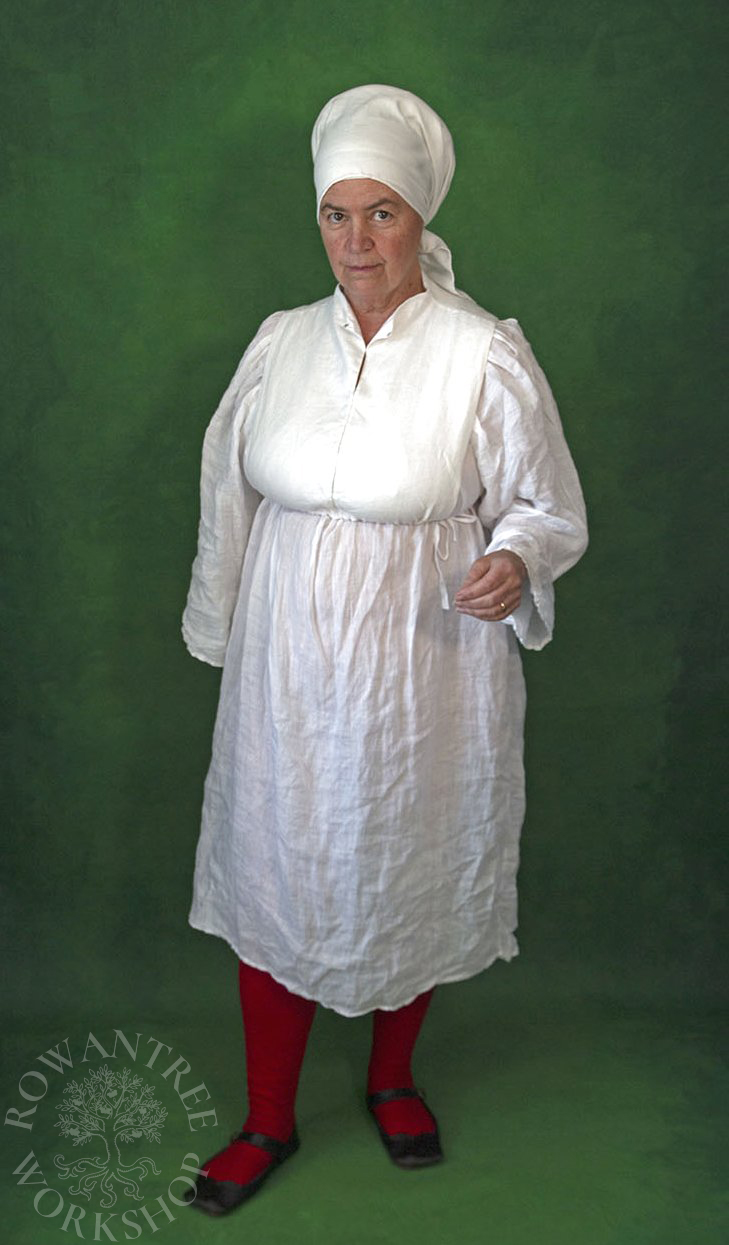
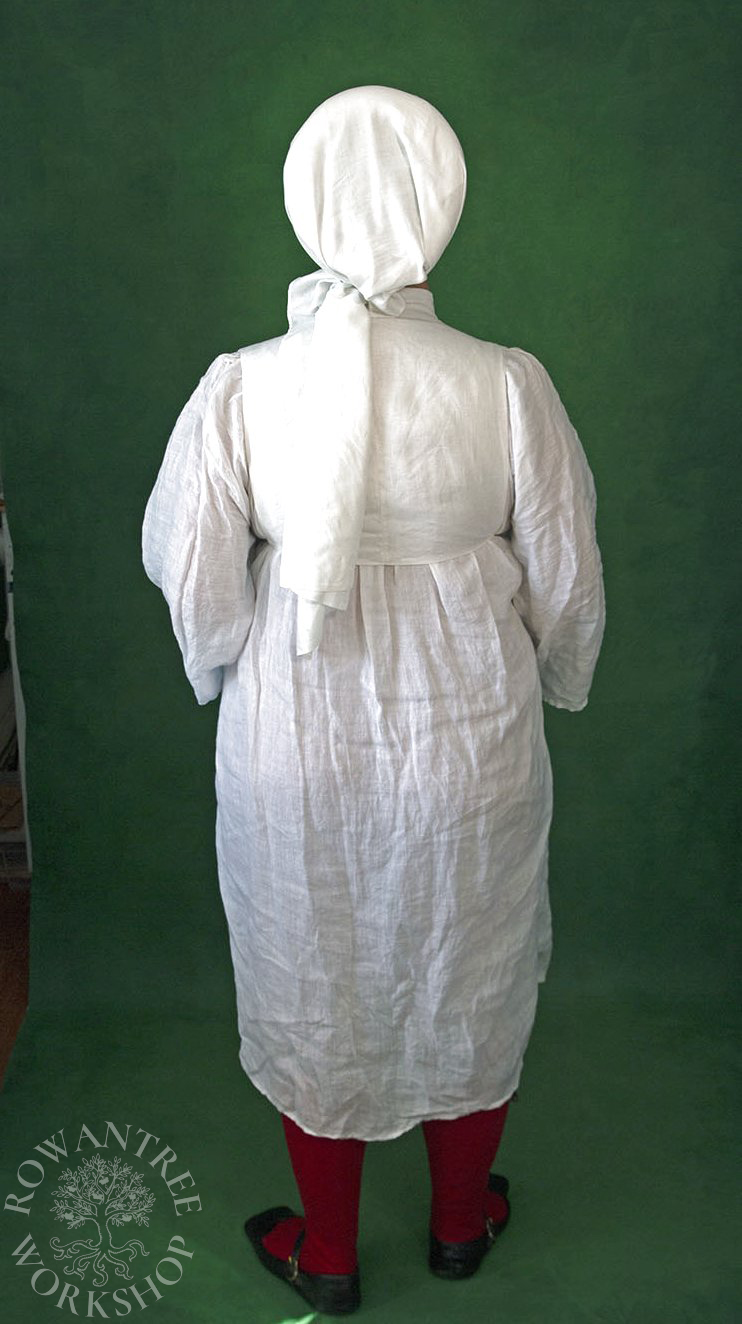
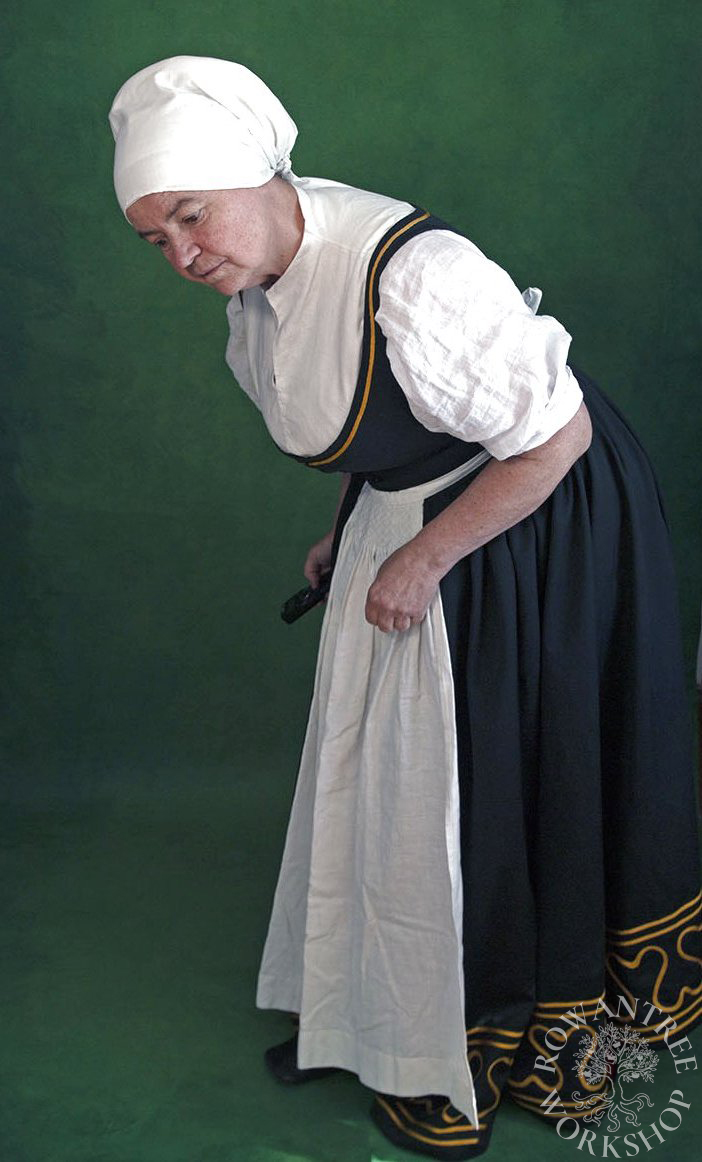
However, I usually wear mine with a Rock over the top. In this case, it seems to work better worn over the Unterrock, under the Rock.
